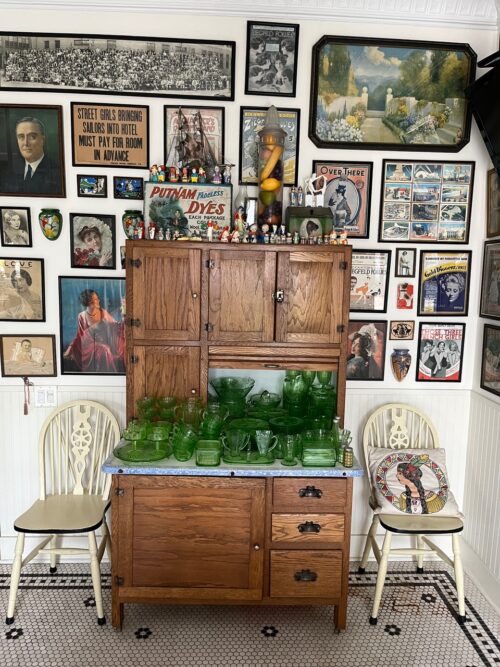By Judy Carmack Bross
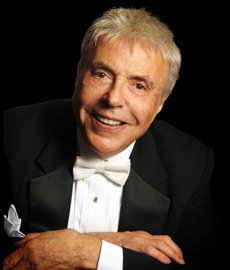
Legendary Bandleader Stanley Paul is downsizing
“Stanley Paul is Chicago’s bastion of elegance. Who doesn’t he know and who in Chicago doesn’t know Stanley? Three generations here adore him. When people ask how I know this legend, I say I am like many, he played at my first formal dance at age 15.”—Sophia DuBrul, founder of Sophia’s Estate Sales.

Stanley Paul’s terrace welcomed countless celebrities and friends.
Beloved bandleader Stanley Paul is downsizing, moving not very far from the Old Town apartment which he filled with Art Deco and other objet glorifying the early 20th century. Through October 13 by appointment only, visitors will view the Wells Street apartment where celebrities and other friends sipped champagne on the terrace lined with ornate ironwork and a flowing fountain, the Chicago skyline as backdrop, or gathered around the piano to hear Stanley play, entranced by the treasures around them.
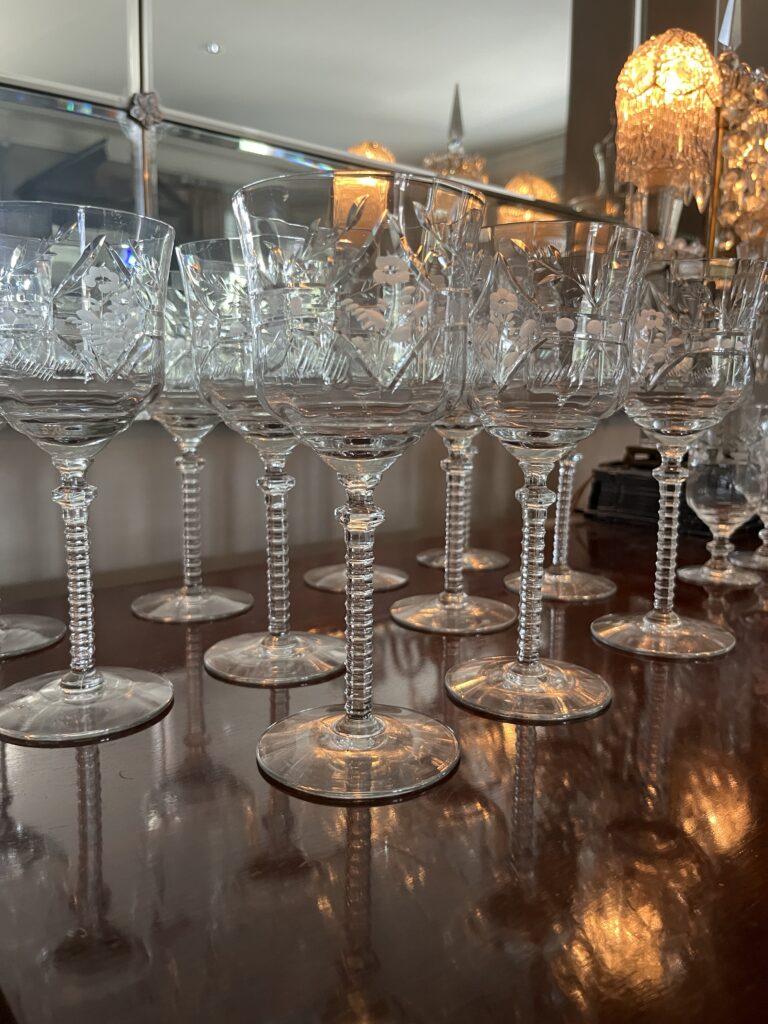
Rock Sharpe Crystal in the Burleigh pattern.
“He said he wanted to put many of his Art Deco pieces out for the universe. That he had enjoyed them for many years and he wanted others to do so as well,” DuBrul said. “Stanley is just so nice and delightful to work with, and his collection is really a deep dive into the first half of the last century. It runs the whole gamut from magnificent 1920’s Rock Sharpe glassware in the Burleigh pattern, to a 1930s kitchen table with an enamel top, to tins advertising products of the time.
 |
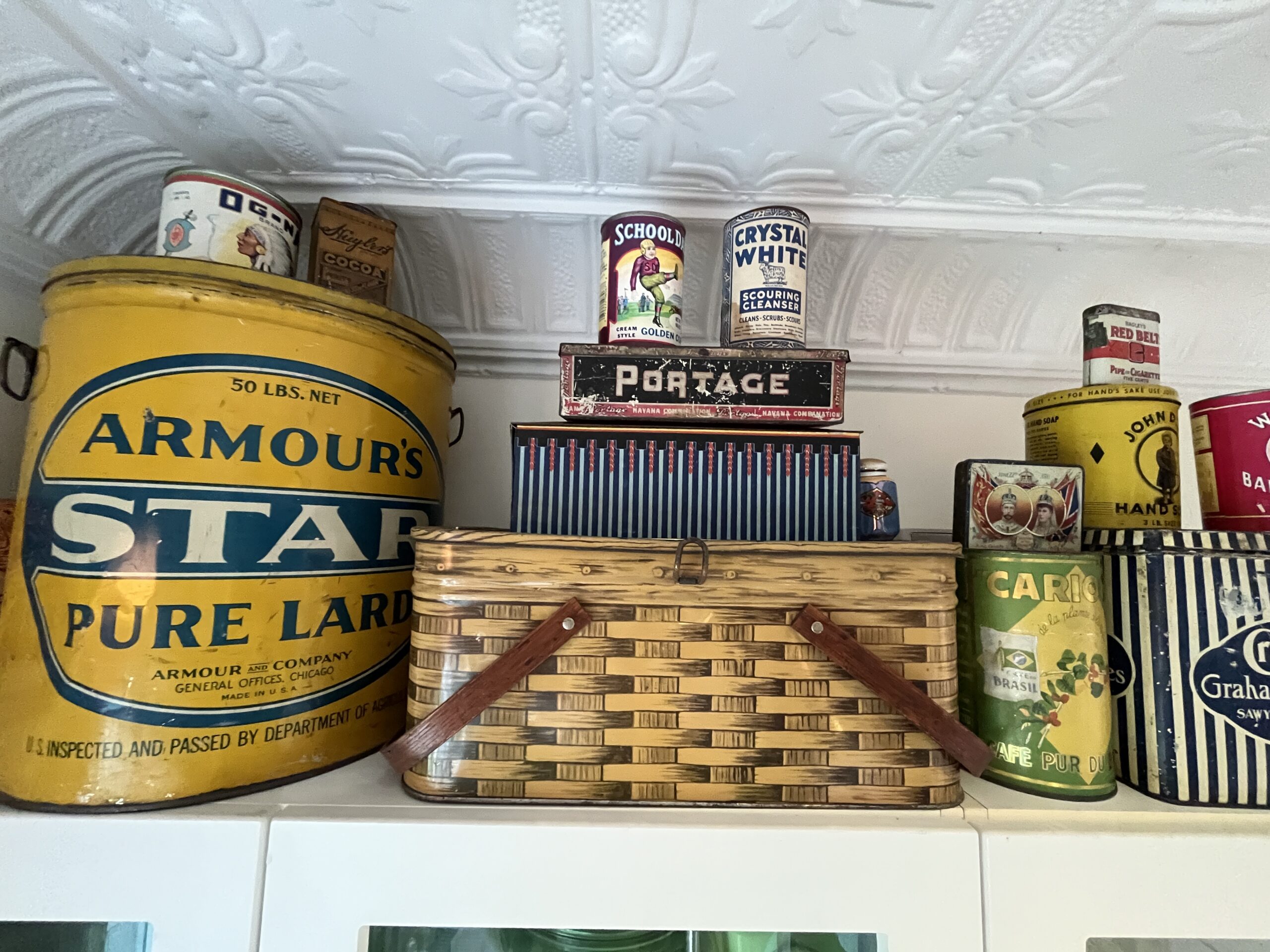 |
“Stanley collected many fascinating antique advertising and product tins. These lithographed tins began to be produced in 1875 and remained a convenient way to keep food fresh and to advertise your products through World War II when they were replaced with plastic packaging,” DuBrul said.

1930s enamel topped kitchen table with hairpin legs in black and ivory with 6 chairs painted to match.
“He has a very fun eye. There are all sorts of chalkware figurines representing popular figures of the 1930s through 1950s.These plaster figurines were carnival prizes and depicted movie stars and characters from radio shows and comic books as well as patriotic themes, bathing beauties, animals, and much more. They were massed produced, but since they were fragile and meant to be disposable, they are collector’s items today.”
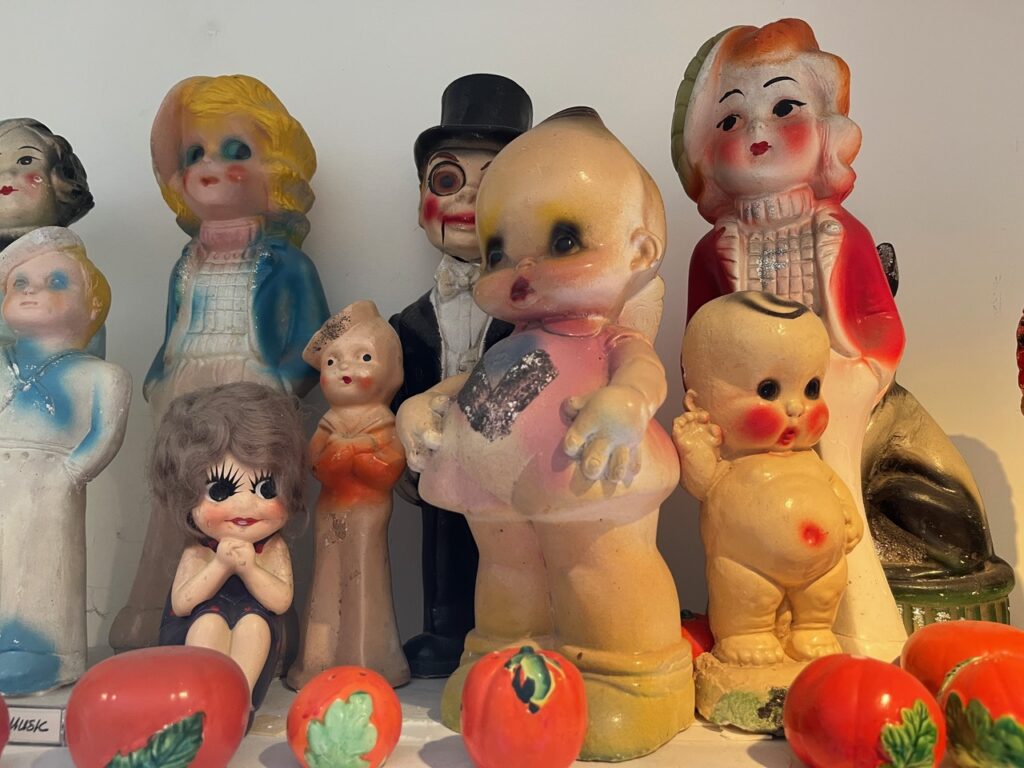 |
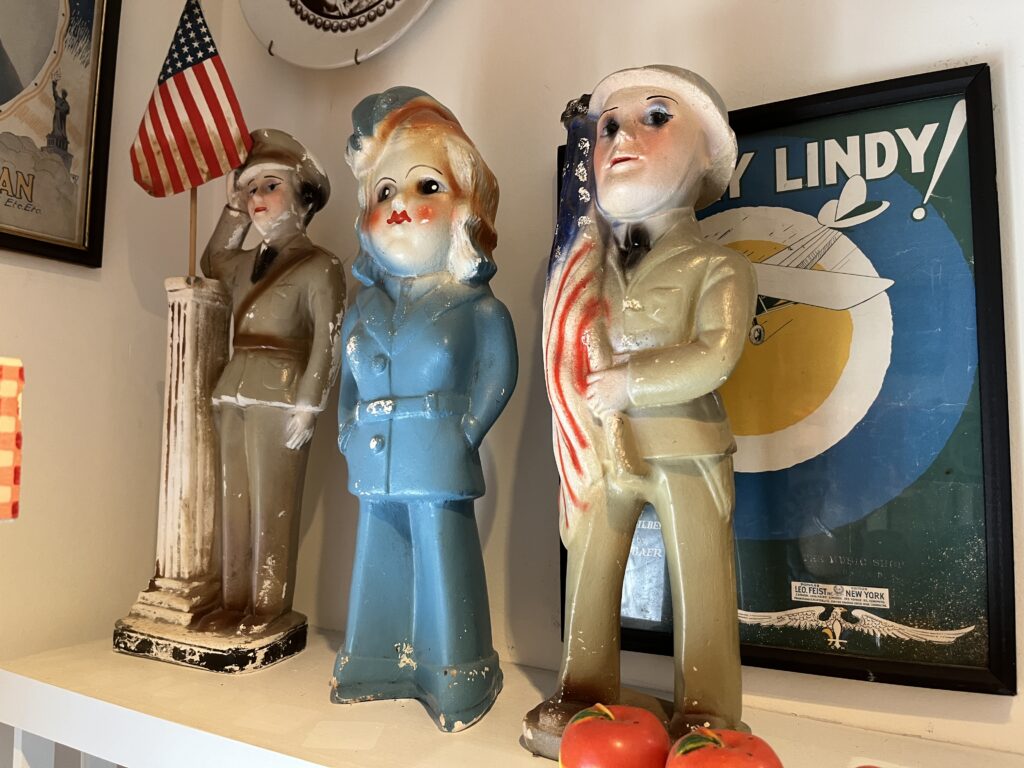 |
Paul grew up in Pennsylvania and began collecting at barn sales as a teenager. “Glassware became one of his passions, and a whole kitchen set of Depression glass, all in green, is featured, including plates, bowls, glasses and even refrigerator storage pieces,” DuBrul commented.
“The Rock Sharpe Burleigh glasses–wine, water, cordials and others–were made by Libbey in its Corning, New York factory. The company’s crystal division closed down after World War II.”
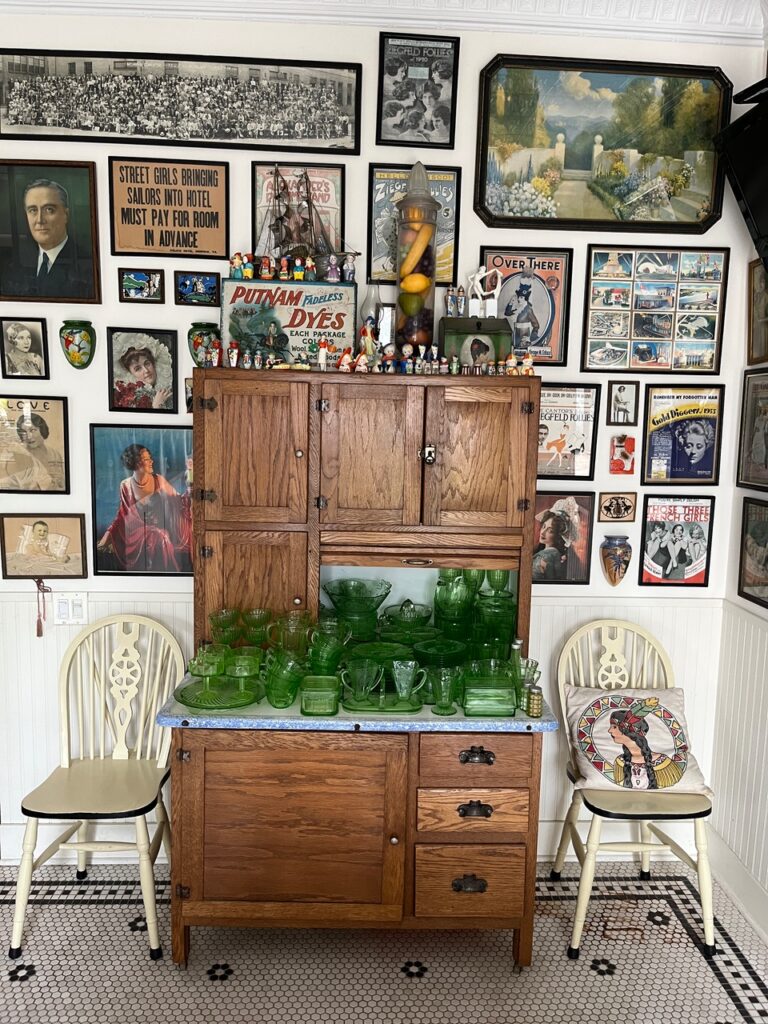
Among the downsizing offerings of Stanley Paul, including the Hoosier hutch.
“We are offering his golden oak Hoosier hutch circa 1920 which is one of the finest I have seen,” DuBrul said. “These were usually made in light oak or pine at the turn of the century through the early 1930’s and were used for kitchen storage before the dawn of built-in kitchen cabinets with attached counters. Stanley’s features a pull-out countertop that can be used for prep space. These types of cabinets got the name Hoosier because many of them were produced in Indiana. Sellers of New Castle, Indiana introduced the first Hoosier cabinet in 1898. They are still really functional as well as charming pieces.”
Paul collected more modern pieces which reflected his love of Art Deco.
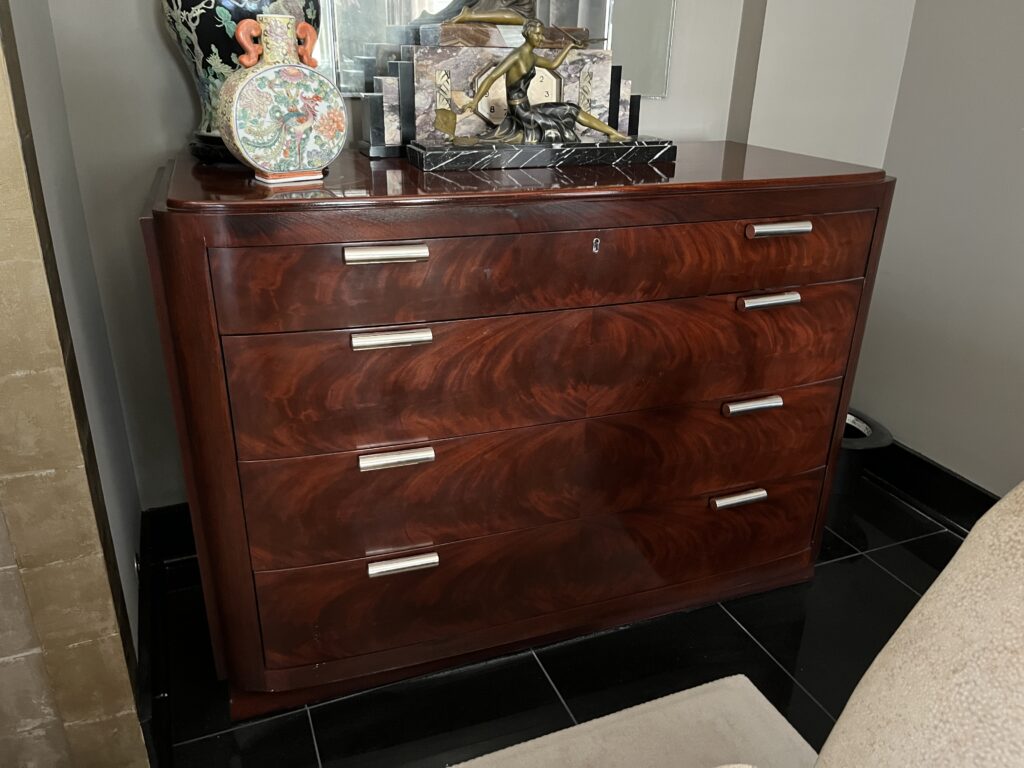
A pair of 1980s vintage Ralph Lauren mahogany dressers in the Art Deco style is also offered.

DuBrul, who founded her company in 2015, and says that there is always something new to learn in the sales she offers. “You don’t get involved in this business if you don’t love old stuff.”
Megan McKinney wrote in a Classic Chicago Magazine article on October 6, 2019: “Stanley Paul has been at the center of Chicago’s entertainment and social life since December 1964, when he arrived in the city from New York to lead the Pump Room orchestra. There he rapidly became a favorite not only of film stars stopping at the Ambassador East Hotel between trains from Los Angeles to New York and back but also of the Chicagoans who were attracted by the Pump Room’s Hollywood glamour.”
“Stanley Paul added playing for the city’s growing number of gala benefits and other social events to his Pump Room duties. Always with a sense of history and his role in it, he systematically accumulated every picture, invitation and party program associated with these events to add to a growing collection of press clippings, and, in 1991, he began donating them to the Chicago Public Library Special Collections at the Harold Washington Library Center.”

Stanley Paul at the time of his appearance at Carnegie Hall.
A frequent columnist for Classic Chicago where he has written about his friendships with Judy Garland, Mabel Mercer, Bobby Short Peggy Lee, Noel Coward and so many others, he delightfully brought to life his Carnegie Hall performance before coming to Chicago:
“As I stepped onto the stage, I was overwhelmed that I was actually going to perform here… my knees were knocking and my breath was short. Sitting down at the piano, I pressed my fingers down upon the keys and heard acoustics like I never had in my life. (And thankfully, because I was thoroughly familiar with the music, within a few minutes of starting, I calmed right down and had the time of my life.) The exhilaration of playing in such a magnificent place was simply indescribable; it was a night I’ll never forget.”
Visit the Classic Chicago archives to read more about the incomparable Stanley Paul who has chronicled his early days in New York up to recent Palm Springs adventures.

from the Stanley Paul collection.
Please call 773-729-0638 to make an appointment to view the Stanley Paul treasures. Available through October 13.



